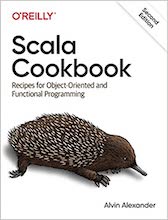|
|
Hibernate example source code file (example_mappings.po)
This example Hibernate source code file (example_mappings.po) is included in the DevDaily.com
"Java Source Code
Warehouse" project. The intent of this project is to help you "Learn Java by Example" TM.
The Hibernate example_mappings.po source code
msgid ""
msgstr ""
"Project-Id-Version: PACKAGE VERSION\n"
"Report-Msgid-Bugs-To: http://bugs.kde.org\n"
"POT-Creation-Date: 2010-02-04T04:51:22\n"
"PO-Revision-Date: YEAR-MO-DA HO:MI+ZONE\n"
"Last-Translator: FULL NAME <EMAIL@ADDRESS>\n"
"Language-Team: LANGUAGE <LL@li.org>\n"
"MIME-Version: 1.0\n"
"Content-Type: text/plain; charset=UTF-8\n"
"Content-Transfer-Encoding: 8bit\n"
#. Tag: title
#, no-c-format
msgid "Example: Various Mappings"
msgstr "예제: 여러 가지 매핑들"
#. Tag: para
#, fuzzy, no-c-format
msgid "This chapters explores some more complex association mappings."
msgstr "이 장은 몇몇 보다 복잡한 연관 매핑들을 보여준다."
#. Tag: title
#, no-c-format
msgid "Employer/Employee"
msgstr "Employer/Employee"
#. Tag: para
#, fuzzy, no-c-format
msgid ""
"The following model of the relationship between <literal>Employer "
"and <literal>Employee uses an entity class (Employment와 Employee 사이의 관계에 대한 "
"다음 모형은 그 연관를 표현하는 데 실제 엔티티 클래스(<literal>Employment."
msgstr ""
"그리고 다음은 <literal>SchemaExport에 의해 생성된 테이블 스키마이"
"다."
#. Tag: title
#, no-c-format
msgid "Author/Work"
msgstr "Author/Work"
#. Tag: para
#, fuzzy, no-c-format
msgid ""
"Consider the following model of the relationships between <literal>WorkAuthor and Person. In the "
"example, the relationship between <literal>Work and "
"<literal>Author is represented as a many-to-many association and "
"the relationship between <literal>Author and Person extend Person."
msgstr ""
"<literal>Work, Author 그리고 PersonWorkAuthor 사이의 관계를 many-to-many 연관으로 표현"
"한다. 우리는 <literal>Author와 Person 사이의 관"
"계를 one-to-one 연관으로 표현하고자 선택한다. 또 다른 가능성은 "
"<literal>Author가 Person을 확장하도록 하는 것일 "
"것이다."
#. Tag: para
#, no-c-format
msgid ""
"The following mapping document correctly represents these relationships:"
msgstr "다음 매핑 문서는 이들 관계들을 정확하게 표현한다:"
#. Tag: para
#, fuzzy, no-c-format
msgid ""
"There are four tables in this mapping: <literal>works, "
"<literal>authors and persons hold work, author "
"and person data respectively. <literal>author_work is an "
"association table linking authors to works. Here is the table schema, as "
"generated by <literal>SchemaExport:"
msgstr ""
"이 매핑에는 네 개의 테이블들이 존재한다. <literal>works, "
"<literal>authors와 persons은 각각 작업 데이터, "
"저자 데이터, 개인 데이터를 보관한다. <literal>author_work는 저자들"
"을 작업들에 연결시키는 연관 테이블이다. 다음은 <literal>SchemaExport, Order, Line ItemProduct. There is a one-to-many association "
"between <literal>Customer and Order, but how "
"can you represent <literal>Order / LineItem / "
"<literal>Product? In the example, LineItem is "
"mapped as an association class representing the many-to-many association "
"between <literal>Order and Product. In "
"Hibernate this is called a composite element."
msgstr ""
"이제 <literal>Customer, Order와 "
"<literal>LineItem 그리고 Product 사이의 관계들"
"에 관한 모형을 검토하자. <literal>Customer와 OrderOrderLineItem / Product를 표현할 "
"것인가? 나는 <literal>Order와 Product 사이의 "
"many-to-many 연관를 나타내는 하나의 연관 클래스로서 <literal>LineItem, orders, "
"<literal>line_items and products hold customer, "
"order, order line item and product data respectively. <literal>line_items, orders, "
"<literal>line_items 그리고 products는 각각 고객 "
"데이터, 주문 데이터, 주문 라인 아이템 데이터, 그리고 제품 데이터를 보관한다. "
"<literal>line_items는 또한 주문들을 제품들과 연결시키는 연관 테이블"
"로서 동작한다."
#. Tag: title
#, no-c-format
msgid "Miscellaneous example mappings"
msgstr "기타 예제 매핑들"
#. Tag: para
#, fuzzy, no-c-format
msgid ""
"These examples are available from the Hibernate test suite. You will find "
"many other useful example mappings there by searching in the <literal>test
Other Hibernate examples (source code examples)
Here is a short list of links related to this Hibernate example_mappings.po source code file:
|
 The search page
The search page Other Hibernate source code examples at this package level
Other Hibernate source code examples at this package level Click here to learn more about this project
Click here to learn more about this project
